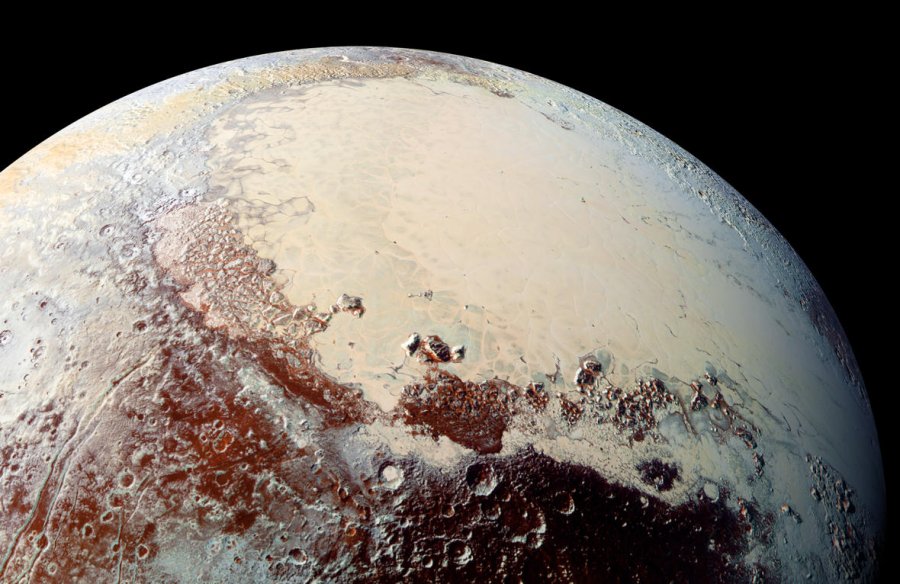Pluto Could Be Made Of Billion Comets Or Other Kuiper Belt Objects – New Theory

Based on data from NASA’s New Horizons discoveries and ESA’s Rosetta mission, researchers at Southwest Research Institute propose a new theory about how Pluto may have formed at the edge of our solar system.
The research is focused on the nitrogen-rich ice in Sputnik Planitia, a large glacier that forms the left lobe of the bright Tombaugh Regio feature on Pluto’s surface.
“We’ve developed what we call ‘the giant comet’ cosmochemical model of Pluto formation,” said Dr. Christopher Glein of SwRI’s Space Science and Engineering Division.
“We found an intriguing consistency between the estimated amount of nitrogen inside the glacier and the amount that would be expected if Pluto was formed by the agglomeration of roughly a billion comets or other Kuiper Belt objects similar in chemical composition to 67P, the comet explored by Rosetta.”
In addition to the comet model, researchers also investigated a solar model, with Pluto forming from very cold ices that would have had a chemical composition that more closely matches that of the Sun.
Scientists needed to understand not only the nitrogen present at Pluto now — in its atmosphere and in glaciers — but also how much of the volatile element potentially could have leaked out of the atmosphere and into space over the eons. They then needed to reconcile the proportion of carbon monoxide to nitrogen to get a more complete picture.
Ultimately, the low abundance of carbon monoxide at Pluto points to burial in surface ices or to destruction from liquid water.
“Our research suggests that Pluto’s initial chemical makeup, inherited from cometary building blocks, was chemically modified by liquid water, perhaps even in a subsurface ocean,” Glein said. However, the solar model also satisfies some constraints. While the research pointed to some interesting possibilities, many questions remain to be answered.
“This research builds upon the fantastic successes of the New Horizons and Rosetta missions to expand our understanding of the origin and evolution of Pluto,” said Glein. “Using chemistry as a detective’s tool, we are able to trace certain features we see on Pluto today to formation processes from long ago. This leads to a new appreciation of the richness of Pluto’s ‘life story,’ which we are only starting to grasp.”
The research was supported by NASA Rosetta funding. The member states of the European Space Agency (ESA) and NASA both contributed to the Rosetta mission. NASA’s Jet Propulsion Lab (JPL) manages the U.S. contribution of the Rosetta mission for NASA’s Science Mission Directorate in Washington.
Original story
Research – Icarus



 Creators of mankind
Creators of mankind Description of “Tall white aliens”
Description of “Tall white aliens” Where they came from?
Where they came from? About hostile civilizations
About hostile civilizations The war for the Earth
The war for the Earth “Tall white aliens” about eternal life
“Tall white aliens” about eternal life Video: “Nordic aliens”
Video: “Nordic aliens” Aliens
Aliens Alien encounters
Alien encounters The aliens base
The aliens base UFO
UFO Technology UFO
Technology UFO Underground civilization
Underground civilization Ancient alien artifacts
Ancient alien artifacts Military and UFO
Military and UFO Mysteries and hypotheses
Mysteries and hypotheses Scientific facts
Scientific facts


















